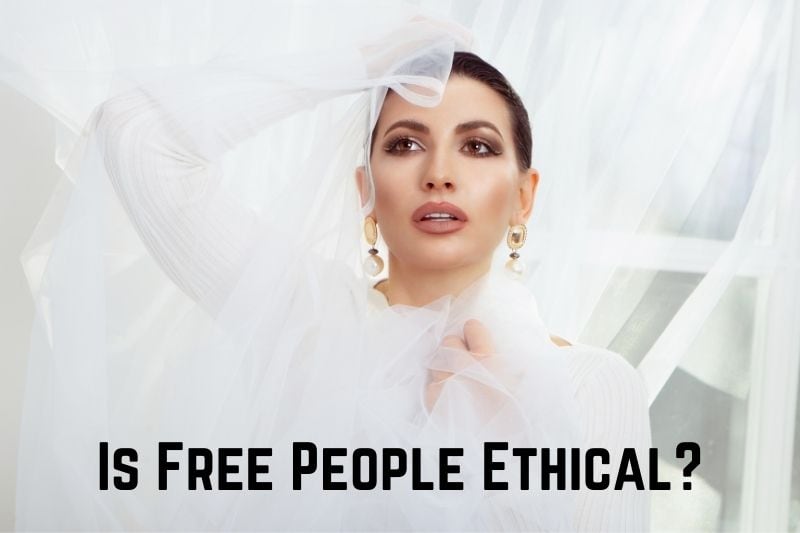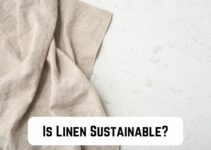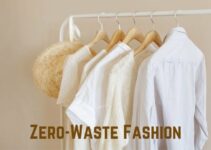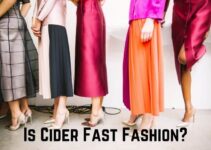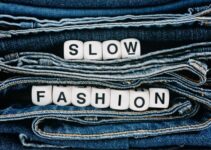Did you know that around 92 million tons of clothing and textiles are thrown away yearly? As we continue to fill our landfills, the search for sustainable fashion continues. Because truth be told, we shouldn’t let the environment suffer for our unwanted garments.
Today, we turn our magnifying glass to Free People. Does it contribute to fashion sustainability? Is Free People ethical? How does Free People impact our environment? Should we simply avoid it instead? Let’s find out.
Read: What is Slow Fashion and How Can It Help the Planet?
What is Free People?
Free People is a bohemian-inspired fashion brand that was founded in the United States in the 1970s. The brand offers a range of clothing, accessories, and shoes for women, focusing on relaxed, comfortable styles that embody a carefree, bohemian spirit.
Free People is known for its vintage-inspired designs, unique prints, and eclectic mix of textures and materials. The brand is also committed to sustainability and ethical manufacturing practices, and has launched several initiatives to reduce its environmental impact and support fair labor standards.
Free People earned its mark by integrating their contemporary style with current trends. On top of that, its continuous collaboration with in-house and outside partners cemented its place in the fashion industry.
Is Free People Ethical?
No. Free People is not an ethical brand. Despite its claims of implementing sustainable and ethical production methods, its use of non-eco-friendly materials and lack of transparency proves otherwise.
In fact, Free People ranked within the 11% to 20% range in 2023’s Fashion Transparency Index. Let’s take a look as to why that is.
Environmental Impact
Don’t get me wrong. Free People employs several practices to reduce its environmental impact. This includes using renewable energy, LED lights in stores, and fuel efficiency in transporting goods.
However, these are but small steps that don’t and shouldn’t hide their environmentally harmful practices.
For starters, only a handful of selections in their vast clothing collections use eco-friendly materials. The production of their clothes also includes the use of toxic chemicals and massive water consumption.
Furthermore, the brand’s drive to keep up with the current fashion trends leads to sourcing non-sustainable materials that end up in landfills.
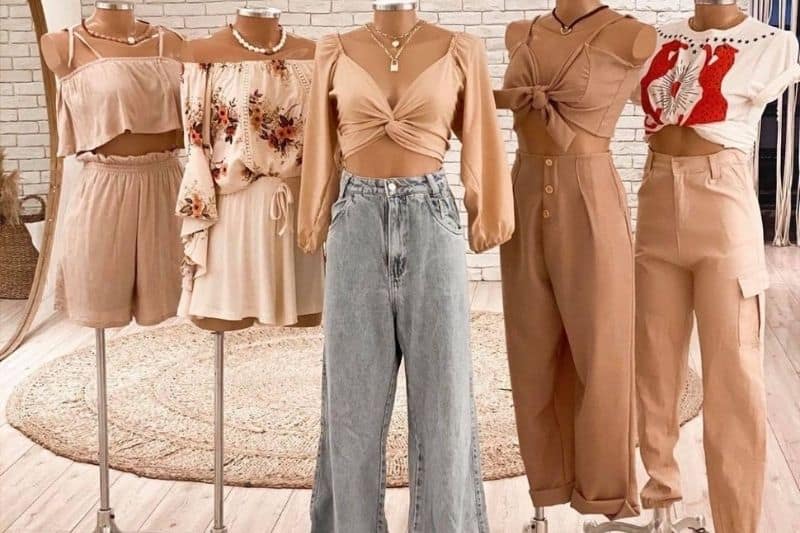
Labor Conditions
Good labor conditions don’t just refer to fair wages. It also includes access to basic amenities and safe working environments.
One way to determine this is to see whether or not the brand has a Fair Trade Certification. Unfortunately, no product from Free People suggests this.
Moreover, ten years after the Rana Plaza collapse, which led to the death of more than 1,000 people, Urban Outfitters (Free People’s parent company) has yet to sign the International Accord.
The International Accord is a legally binding agreement that requires brands to provide safe and healthy garment factories for workers.
Animal Welfare
Like its environmental impact, Free People has been progressing in its animal welfare practices. Seven years ago, the brand decided to stop using wool (angora) harvested from rabbits.
Ninety percent of the world’s angora wool comes from China, and unfortunately, rabbits are often kept in cages while harvesters pluck the wool from their skin regularly.
While refraining from using angora wool might look good for the brand, Free People’s other practices do not suggest it is committed to improving animal welfare.
The brand still uses other materials derived from animals, like leather and wool. As mentioned, Free People does not disclose their practices or participate in transparency audits.
Ergo, there’s no way to determine whether or not the animals involved in their production process are cared for.
Sustainability Practices
There are several commendable initiatives set forth by Free People, one of which is donating to nonprofit organizations and local communities.
However, when it comes to sustainability practices, the brand is falling behind. Aside from encouraging consumers to use reusable shopping bags and the small collection of clothes that use eco-friendly materials, there’s not much that suggests it’s headed in the right direction.
Much of its production process still includes unsustainable materials like polyester, synthetic fabric, viscose, and conventional cotton.
Upon visiting its “Ongoing Commitments” page, I quickly noticed that there’s no mention of switching to sustainable solutions in the foreseeable future.
Is the Brand Free People Fast Fashion?
Yes. Virtually everything about the brand, from its manufacturing practices to production materials, suggests that Free People is a fast fashion brand.
In fact, it seems to embrace the concept of fast fashion by introducing new styles to its collection regularly. The website may label this practice as “complementing current trends,” but that just means large amounts of textiles go to landfills as waste.
It’s easy to disguise a brand as slow fashion; avoid offering discounts, and slap a more expensive price tag on the products. That’s exactly what Free People is doing.
However, it only takes a second look to unveil the truth behind this institution. Free People is a fast fashion brand, and there’s no indication that it’ll change in the near future.
Is Free People Sustainable?
No. Free People is not a sustainable brand. Despite taking some small steps in the right direction, Free People is still a mile behind towards sustainability.
A handful of clothes made with eco-friendly materials combined with a “free spirit” front does not make a brand sustainable, especially if almost 80% of its products use unsustainable materials.
Moreover, its inability to commit to transparency might mean it’s hiding something. That could be anything from unfair labor practices, a large carbon footprint, lack of certifications, a questionable supply chain, and failure to adopt a circular economy.
All of these are essential to be a truly sustainable brand.
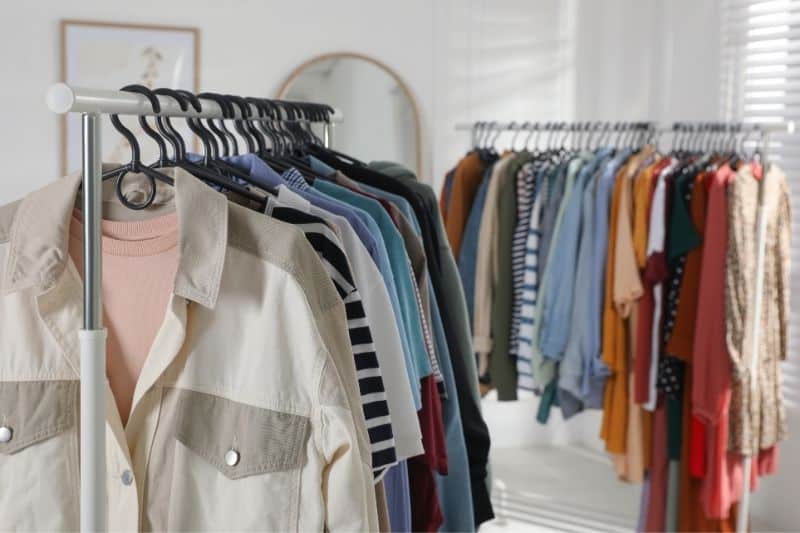
Best Sustainable Alternatives to Free People
The best alternatives to Free People include Christy Dawn, Whimsy + Row, TAMGA Designs, OhSevenDays, and Ace & Jig.
Here’s what you need to know about these brands.
1. Christy Dawn
What’s one way to show that you care about the environment? Create timeless designs that honor Mother Earth. When you switch to a sustainable brand, you’re exhibiting your oneness with nature, and Christy Dawn will help you do that in elegant fashion.
Its garments are made with organic cotton, surplus fabrics, and recycled cotton, all handmade in a modest factory in Los Angeles. The label’s main selling point is its vintage-inspired, minimalist clothing for women.
And because it’s sustainable clothing, one of its many benefits is that it’s guaranteed to last for years.
2. Whimsy + Row
One aftereffect of switching to sustainable clothing is that you’re one of the few people who own a specific dress or other garments. That’s why wearing a Whimsy + Row clothing piece is a privilege in and of itself.
The brand uses surplus materials, and the production of each piece is in limited-run batches, further reducing its textile waste and carbon footprint. On top of that, Whimsy + Row keeps its product packaging to a minimum.
The best part? All of its clothing pieces are guaranteed to exude an aura of ease and elegance.
3. TAMGA Designs
Both of the sustainable brands I’ve mentioned so far embrace a minimalist approach to their designs. But if that’s not your cup of tea, check out TAMGA Designs instead. The TAMGA brand showcases that sustainable fashion can also be bright, vibrant, and colorful.
Most of its designs are inspired by traveling and beachy looks, and of course, it ensures you still have clean and safe beaches to go to. It utilizes water-saving dyes that completely abandon the practice of discarding wastewater into the environment.
On top of saving our planet’s water resources, TAMGA Designs partners with nonprofit organizations to help conserve some of Indonesia’s rainforests.
Read: How Does Biodiversity Contribute to the Sustainability of an Ecosystem?
4. OhSevenDays
Aside from creating garments that will last for years, OhSevenDays helps reduce the fashion industry’s environmental impact by capitalizing on fast fashion’s leftovers. Instead of sourcing out new materials for its products, OhSevenDays gets its fabrics from garment factories.
The brand then transforms these leftovers into fashionable everyday womenswear, promoting the “Power of Circularity.” And since sustainability is also about the workers, you’d be happy to learn that OhSevenDays provides fair wages and exemplary labor conditions to its people.
5. Ace & Jig
How do you ensure your brand only manufactures the necessary amount of clothing and does not contribute to textile waste? You manufacture clothing only when someone asks for it. That’s what Ace & Jig offers.
All of its clothes are hand-weaved and made-to-order, reducing the brand’s carbon footprint and energy consumption. Moreover, Ace & Jig uses scraps from the cutting room to further minimize its waste.
Each piece of clothing that goes out its front door includes special care instructions to help clients prolong the lifespan of their garments.
Conclusion
Sadly, brands like Free People come from fashion conglomerates worth billions of dollars. These corporations have the resources to make impactful changes that help our environment, and yet they’re the ones that seem to hurt it the most.
It’s time that we turn the spotlight on the unsung heroes who care more about how their production processes affect our world rather than making money. The best way for us to contribute to this movement is to switch to sustainable fashion.
So, the next time you’re shopping for clothes, ask yourself this: What does your fashion statement say about the earth?
